News in Enumclaw
Then and Now
Then and Now
NOTES
(1) Shadow, p. 110
(2) About Buckley Banner. Chronicling America: American's Historic Newspapers. Library of Congress
(3) "Newspaper reports eruption of Mount Baldy on January 10, 1895." Historylink Essay 416.
(4) "Don't Do It." The King County Courier. July 20, 1920.
(5) Louise--p. 39.
(6) Blackpress.ca
(7) Media Nation
(8) jimromenesko.com
(9) Business Insider
(1) Shadow, p. 110
(2) About Buckley Banner. Chronicling America: American's Historic Newspapers. Library of Congress
(3) "Newspaper reports eruption of Mount Baldy on January 10, 1895." Historylink Essay 416.
(4) "Don't Do It." The King County Courier. July 20, 1920.
(5) Louise--p. 39.
(6) Blackpress.ca
(7) Media Nation
(8) jimromenesko.com
(9) Business Insider
Resources
About
Contact
Enumclaw was barely out of the woods when it got its first newspaper. In 1890, only eleven years after the Stevensons built their tiny cedar shack in the old growth forest near today's city hall, the presses began running for the Evergreen Overland in the new town. Actually, it was a new state, too--just a few months old--and the new governor's son, Bert Rogers, saw opportunity here. But he and three other hopeful entrepreneurs were ahead of their time, and had to close down their Evergreen Overland after only two years.
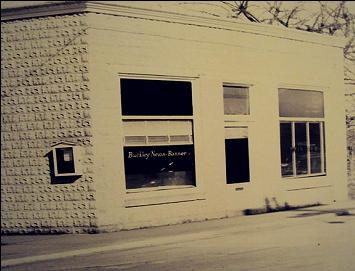
Rogers' failure can be attributed not only to the scant population, but to competition. Those few people had already been served by the Buckley Banner since December 17, 1889. (1) The paper across the White River not only preceded the Overland--it survived until 1973. (2)
The Buckley News Banner
In 1895, the Banner reported the eruption of Mt. Baldy (above the current Enumclaw Expo Center) as "explosions 'like the roar of a canon' and 'a crater alive with terrible heat' ". Although geologically unlikely and otherwise unconfirmed, the event is portrayed vividly with "tendrils of molten lava snaking their way down the slopes and plumes of smoke that can be seen from as far away as Seattle, 50 miles to the northwest." (3)
Old copies of the Banner, as well as its presses and boxes of type and various artifacts, can be seen today in the Foothills Historical Society Museum in Buckley.
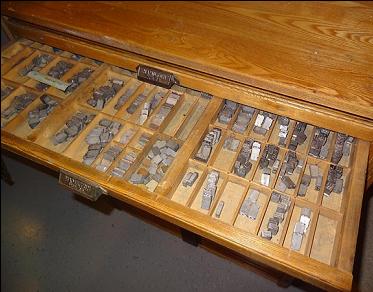
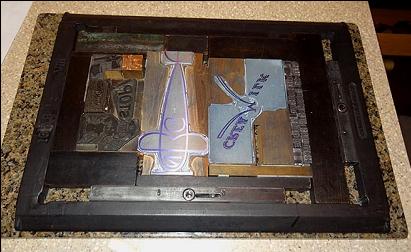
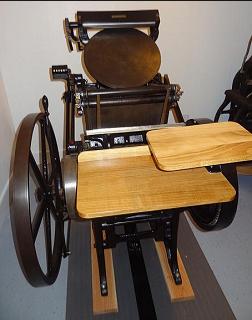
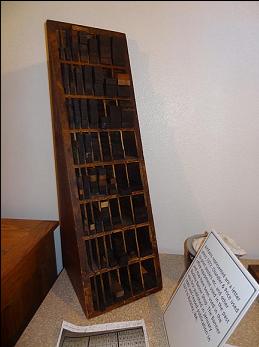
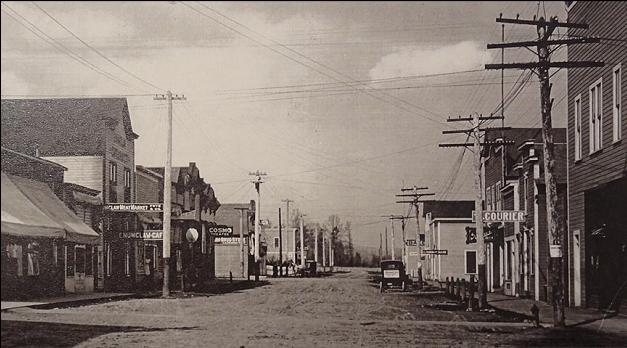
Enumclaw again got its own newspaper when D. C. Ashmun started the King County Courier in 1900. The new paper was not averse to editorializing about a variety of topics. In the first issue of the Courier, a column exhorted each citizen to take responsibility. "Fifteen minutes a day after work hours by each resident will clean every street in Enumclaw in thirty days, and thirty more days will cut down the brush on non-resident lots. But, say some, the owners will not permit them to be cleared. A man who will object to such clearing has no right to our respect or consideration and we should treat such non-resident property as though the owner were in the asylum, where he belonged. Do your share of improving and let your dirty neighbor go plumb to the devil. If he gets roasted you will enjoy your luxury just so much more." (4)
The Courier opened for business in 1900.
Ashmun published the King County Courier for three years until a devastating fire destroyed the building and its contents. He struggled on for another year but finally sold to local physician, Dr. H. H. Rust. Vernon Van Buskirk came from Seattle to manage the operation for Rust and was amazed at what he found. The " 'make believe printing office' [was] quite a change from the city. They printed each page singly on a press powered by a foot treadle." (5)
Ashmun started his second paper, the Herald, in Enumclaw in 1909, but he and his successors struggled with it until Clarence Lafromboise assumed its leadership. The two papers merged into the Courier-Herald in 1933, and in turn, bought the Buckley Banner in 1973.
Early Buckley Banner printing press
When a large, multi-national media corporation assumes ownership of a locally owned newspaper, changes are to be expected. Courier-Herald editor Kevin Hanson moved into a reporter position in another Sound Publishing paper, and reporter Dennis Box was named editor here. Other reporters were let go. The page size of the paper and the non-advertising content were reduced, while several generic columns replaced local stories. The paper was delivered free to area residents, although subscriptions were still available to those who did not realize they didn't have to pay for it. (We received three copies each week until we cancelled our subscription. Now we get only two.)
Many newspapers around the country are financially in trouble now, but some of the survivors have been adapting to changing times. With a few local articles, generic content that mimics local, minimal staff, and elimination of investigative reporting, a paper can cut costs significantly and becomes more of an advertising circular. The old town paper turns into something quite different, although it retains its old name.
That being said, the Courier-Herald featured a remarkable series a few years ago. Editor Dennis Box did the old- fashioned kind of reporting for the Malcolm Fraser trial. He sat through hours of testimony, interviewed people, conducted research, and took photos. The stories would be interesting primarily to Enumclaw readers, given the trial's connections to people and now defunct institutions in our community, like the Sound Doctine Church and Salt Shaker bookstore.
Of course, the biggest threat to traditional media in general, and the Enumclaw Courier-Herald in particular, has been the internet. People have many more sources of news now, much of it narrowed to their particular interests. And with instant access to alternatives, they are less patient to wait a week to find out what is happening.
Many newspapers around the country are financially in trouble now, but some of the survivors have been adapting to changing times. With a few local articles, generic content that mimics local, minimal staff, and elimination of investigative reporting, a paper can cut costs significantly and becomes more of an advertising circular. The old town paper turns into something quite different, although it retains its old name.
That being said, the Courier-Herald featured a remarkable series a few years ago. Editor Dennis Box did the old- fashioned kind of reporting for the Malcolm Fraser trial. He sat through hours of testimony, interviewed people, conducted research, and took photos. The stories would be interesting primarily to Enumclaw readers, given the trial's connections to people and now defunct institutions in our community, like the Sound Doctine Church and Salt Shaker bookstore.
Of course, the biggest threat to traditional media in general, and the Enumclaw Courier-Herald in particular, has been the internet. People have many more sources of news now, much of it narrowed to their particular interests. And with instant access to alternatives, they are less patient to wait a week to find out what is happening.
Critical to survival is a revenue stream. So far, the Courier appears to have maintained much of its advertising, although some grocery store fliers have shifted to advertising circulars. Online ads, many of them free, have replaced most print classifieds as the personal marketplace of choice, although our town paper still seems to be able to sell classified ads.

Most small town newspapers, including the Courier, have added a website to capture the internet audience, but they have generally been cumbersome sites that few people use. It is as if they were electronic copies of their print versions that did not capitalize on the unique opportunities of the online experience.
As our old newspaper was struggling with its new identity, a new player arrived in town. At the end of 2011, Enumclaw Patch launched as an online source of local news.
We have yet to see what will become of local news in Enumclaw. Will the Courier, or at least Black Rock and Sound Publishing, capitalize on the participatory nature of the internet? Will it continue to evolve into an advertising circular or rediscover its roots in community news? Will Patch central in New York discover how to realize their original goal of becoming a community news source while surviving financially? Will someone else create a different model yet for local news in a changing world?

From the Courier-Herald Online
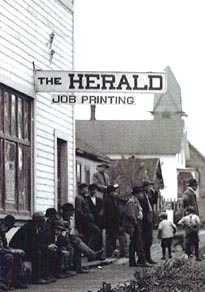
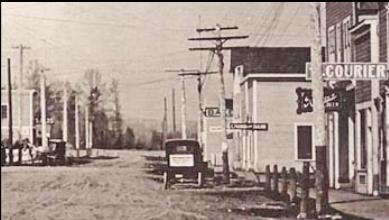
The Courier and Heral as competing newspapers, before the merger
Ending more than a century as a home-grown newspaper, the Courier-Herald was bought in 2008 by Sound Publishing, a subsidiary of Canadian-based Black Press. Two years later, publisher Bill Marcum left to become regional manager for Nickle Ads in Portland. Nickle Ads and Little Nickle Classifieds are also owned by Black Press. Black Press presently has 150 publications and 3500 employees. (6)




AOL's Patch was conceived as a hyper-local online newspaper that would challenge traditional print-based local media. It appeared to be doing well when it opened 14 Washington sites, including Enumclaw, in late 2011. At that time, there were about 900 Patches in twenty-three states.
With a local editor, a budget for freelance writers, and opportunity for local citizens to blog and comment, the site provided a structure for "hyper-local" journalism. It made good use of several capabilities print media did not have:
-Articles, blogs, comments, and announcements could be added or updated at any time.
--Copy didn't have to fill a prescribed number of column inches.
--Citizen journalism wasn't limited to Letters to the Editor.
--Staff and readers could post any number of pictures in color and high resolution.
--Comments with responses could be more like conversation.
--Since content is constantly changing, readers are likely to check every day or even several times a day.
However, the Patch business model was a failure. It was unable to attract local or national ads and was unable to maintain a local presence. Now run from New York, it is a skeleton with almost no readership or participaton.
-Articles, blogs, comments, and announcements could be added or updated at any time.
--Copy didn't have to fill a prescribed number of column inches.
--Citizen journalism wasn't limited to Letters to the Editor.
--Staff and readers could post any number of pictures in color and high resolution.
--Comments with responses could be more like conversation.
--Since content is constantly changing, readers are likely to check every day or even several times a day.
However, the Patch business model was a failure. It was unable to attract local or national ads and was unable to maintain a local presence. Now run from New York, it is a skeleton with almost no readership or participaton.


However, social media is also looking to be a local news source.